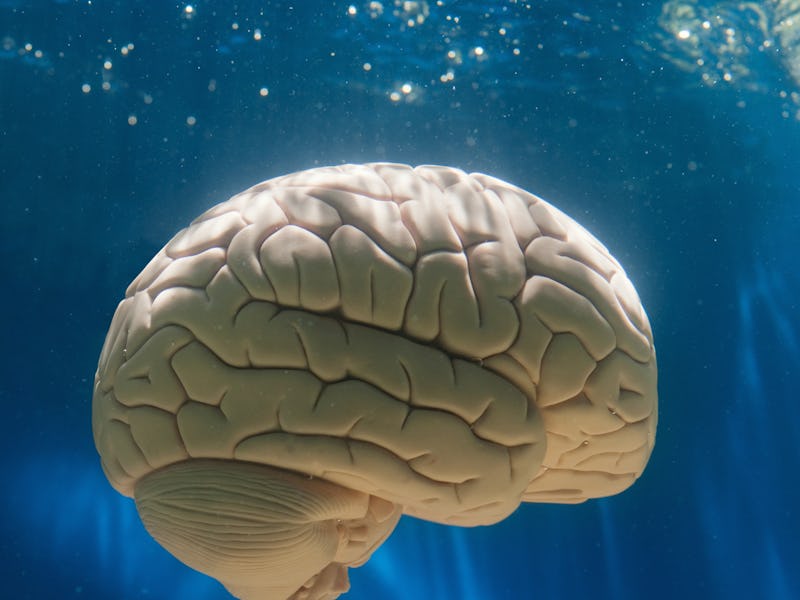Scientists discover the origin of thirst in the brain
"It’s incredible to discover new kinds of body–brain communication."

We all know the feeling — that rush of satisfaction swallowing a cold swig of water. Somehow, without much conscious thought, we know exactly how much to sip to be hydrated and end thirst.
Thirst is one of the most basic, ubiquitous desires of everyday life. Yet, despite its universality, how the brain controls drinking behavior and our feelings of thirst has been a "huge puzzle in neuroscience," Chris Zimmerman tells Inverse.
Zimmerman, a researcher at Princeton Neuroscience Institute, would know: On Thursday, he was rewarded the 2020 Eppendorf & Science Prize for Neurobiology for solving this puzzle, having traced the origins of thirst to the brain.
Drinking instantaneously generates layers of signals that enable neurons in the brain to adjust feelings of thirst on a moment-to-moment basis, Zimmerman and colleagues discovered. Combining signals from blood hydration levels, the mouth, throat, and gut, thirst neurons predict the body's need for water in real-time, and adjust our feelings of thirst preemptively.
"Thirst isn’t simply a response to changes in the hydration levels of the blood as classic models suggested, it’s also dynamically regulated by body-to-brain signals that predict changes in hydration before they occur," Zimmerman says.
"The rapid satiation of thirst during drinking, the coordination of eating and drinking during meals, the unique thirst-quenching properties of oral cooling — we are all aware of these simple phenomena, but until now it had been completely unknown how they arise in the brain."
To pinpoint this complex thirst system, Zimmerman and his team harnessed new technology to record thirst neurons deep in the brains of mice. In doing so, they unlocked a mystery that eluded scientists for decades, all in a matter of days.
"These discoveries are exciting because they reveal for the first time how the brain produces aspects of our everyday experience," Zimmerman says. "It’s incredible to discover new kinds of body-brain communication, and highlights how much we still have to learn about how our brains interact with the rest of our bodies."
Understanding these underlying neural mechanisms will change the way you drink a cup of water forever.
Since the 1950s, scientists have outlined a relatively simple model for thirst in studies and textbooks. This model hinges on the idea of an "osmosensor" in the brain — an area of the brain that directly monitors hydration levels in the blood to predict when and how much to drink to stay hydrated.
However, this model fails to answer a crucial question, says Zimmerman: How does drinking water quench thirst instantly, even though ingested water isn't absorbed into the bloodstream for minutes?
"... until now it had been completely unknown how they arise in the brain."
To answer this question, the team of researchers recorded the activity of the brain's thirst neurons in awake, freely behaving mice. The same brain structures govern thirst in both mice and humans, and most aspects of drinking behavior are similar between these species, Zimmerman explains. That means, what's happening in the tiny brains of mice is likely to translate into people.
"It’s been clear that the 'osmosensor' model for thirst is too simple to explain our drinking behavior, but this paradox had always been inaccessible for technical reasons — it was impossible to specifically record the activity of thirst neurons that are located deep in the brain," Zimmerman says.
Tracing the origin of thirst — Using optical fiber technology, the team stimulated and recorded calcium activity in the brains of mice. This process pinpointed how a group of neurons called SFO neurons sense thirst.
Then, researchers used intragastric infusion – a technique whereby water is directly delivered to mice through an opening on the stomach wall – to explore a body-to-brain signaling pathway in the gut.
"This revealed that thirst neurons do not only detect signals about our current hydration status from the blood as was historically thought," Zimmerman explains. Instead, these cells also receive a second class of signals that arise from elsewhere in the body, including the mouth, throat, and gut.
Thirst neurons (yellow) in the mouse brains.
These signals carry specific pieces of information, he explains: Mouth-to-brain signals encode how much fluid was consumed, gut-to-brain signals reveal the salt and water content of those fluids, while others encode how much food we've eaten. These, Zimmerman says, all "come together within individual cells in the brain to produce the sense of thirst."
This discovery was "completely unexpected," he says. "This new class of signals predicts in real-time the changes in blood hydration that will occur many minutes in the future as a result of eating and drinking."
Going forward, this new technology enables scientists to answer more lingering questions about the basic behaviors governing our day to day lives, which can be dysregulated with certain diseases like obesity and addiction.
"By simply watching the activity of these neurons — or turning their activity 'on' or 'off' — as a mouse drinks a gulp of cold water or eats a bite of food, we can begin to find answers to longstanding questions about our own behavior," Zimmerman says. "These moments of discovery are delightful."